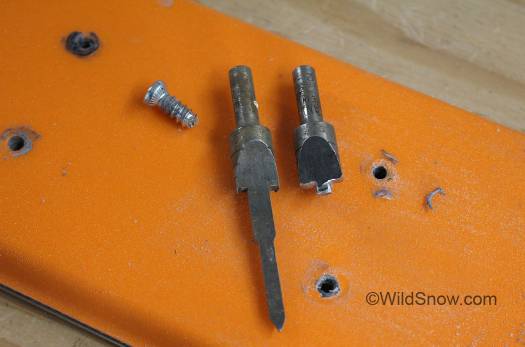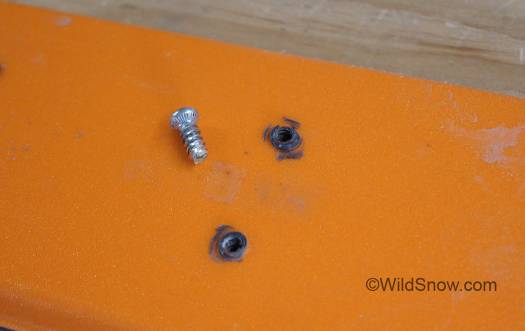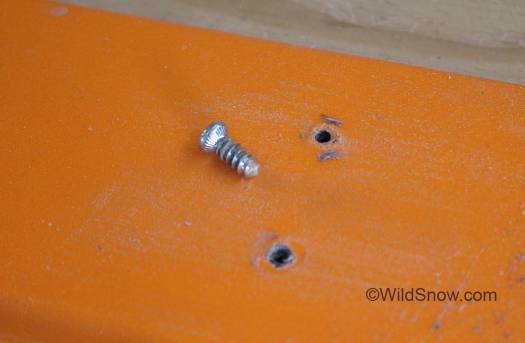One wonders how Google will index that blog post title! But you shop rats and DIYers know what I’m talking about; those pesky “bubble” eruptions around the screw holes in your previously mounted skis. They’re as bad as acne and sometimes nearly as time consuming to fix. Sure, you can tediously cut around each hole with a knife or razor, or attempt to simply scrape everything with a steel scraper. Those options are time consuming and sometimes not so effective. I made a small cutter out of an old wood-screw countersink that works quite well. Final step is still running steel scraper over the holes a few times, but the complete process is now fast and easy.

The solution: cutter at right made from old countersink, shown on left before modification. I cut off the skinny drill bit part, made it smaller and totally dull so it simply indexes the cutter in the hole. I then flattened and sharpened the larger countersink surface which does the actual removal of the bubble volcano.
I sometimes use a disk grinder with a sanding disk to flatten skis with lots of screw holes and epoxy–speedy but crude. A Stanley Surform blade used without the holder can work, but I’ve had it pick up and pull chunks out of the top skin. Another method is to use a sharp knife with a smaller blade (Xacto), using a rotating motion to carve the volcano away. Binding Freedom makes tool for clearing the top edge of larger insert holes, perhaps it works for smaller holes as well? Any commenters have a favorite method? I’m always willing to learn new.
WildSnow.com publisher emeritus and founder Lou (Louis Dawson) has a 50+ years career in climbing, backcountry skiing and ski mountaineering. He was the first person in history to ski down all 54 Colorado 14,000-foot peaks, has authored numerous books about about backcountry skiing, and has skied from the summit of Denali in Alaska, North America’s highest mountain.


